If you know me, you probably already know this is going to be less a race report and more me telling you a story that also happens to have some triathlon in it. If you manage to make it to the end, rock on. If not, no worries.
The short and sweet version is that I came into Tahoe with one very simple goal and I am very fortunate to have been able to achieve it. That goal was not to qualify for Kona or set a PR or crush my competition. My goal was simply to do the best that I could with what I brought on raceday.
In the process of achieving that goal, some things finally became crystal clear to me that should have been apparent for years. For starters, if we’re lucky, we may have one ‘perfect race’ in all of our lifetimes. The 4 keys is not about having a perfect race. In fact it’s quite the opposite. The 4 keys is all about trying to distill and communicate years of lessons learned out of adversity, mistakes and triumphs from veterans. It is not to say that that these lessons were entirely lost on me before today, but I certainly have a more profound appreciation than I have had in the past.
Execution not fitness
My journey to Tahoe this year was one where I spent more time injured than uninjured. It started with an ankle impingement before Alcatraz, switched over to ITBS after Wildflower and more less left me unable to run from May until August. After some particularly low points and a small fortune spent on PT I was able to resume run training exactly 5 weeks before Tahoe. I knew volume as a product of duration was out of the window and began a crash course of attempting to build run durability by product of frequency.
I went into Tahoe with exactly 2 runs over 10 miles. One at 10-flat and another at 14 miles. While any hope of a repeat of last year’s run performance was entirely out the window, I was not overly concerned with this. In fact I was more thankful that I could run at all and strangely optimistic. History has taught me that most of the field will spend months and months of building run volume then effectively piss it away through poor execution on course. I didn’t have to be fast, I simply had to suck less than most everyone else. While I will never claim to be fast, sucking less is kind of my specialty.
The One Thing
Forgive me for going somewhat out of order, however at this point I should say that my ‘one thing’ was not something that I had to call upon on any particularly dark moment on race day. My one thing is what it took to get me to race day. Don’t get me wrong, on the spectrum of human suffering a bum knee is about a 1/10. However, as the proverbial whippersnapper of EN, this year had been a bit of a wakeup call that no one is invulnerable.
The absolute hardest thing about Ironman® Lake Tahoe for me was simply training for it. Going out into the desert to do 5 hours of climbing week in and week out felt particularly pointless when I was setting myself up for a top AG bike split and a 6 hour walking marathon. However, my family was incredibly supportive going into this race with a whopping 13 people making the journey out to Tahoe to support me. I generally see Ironman® as a selfish endeavor, but in this particular case I felt like I owed it to the people who believe in me the most to believe in myself and keep pushing forward.
The Box
The box is a bit like Ironman® timeout. It’s where you have to go when you’ve been bad. Maybe one day I’ll have a race where I don’t live in the box, but this was not that race.
It all started with the swim. As I’m sure everyone is well aware, it was a tad on the chilly side. Given my condo was a 5 minute walk from the swim start I thought I’d be smart by getting to T1 at 6am for a 6:40 start and therefore minimize standing around in the cold. This was not difficult for me because I didn’t have any particularly bad pre-race nerves. I was asleep in bed when many people probably had already arrived at transition.
This was of course a mistake. Small delays add up and I was still in my morning clothes in transition when the pros hit the water. Most of this delay was spent in sheer panic after realizing my bike computer was missing from my morning bag after having removed it the night before due to freezing temps and rain. My backup garmin (watch) was in my T2 bag, which thanks to a split start/finish was 30 minutes away in Squaw Valley.
After finding my mom with less than 5 minutes before the start, I gestured wildly while trying to explain that if there was ever a course I needed power on it was Tahoe. Fortunately, the situation was not quite as dire as it felt since the condo was a short walk away and I was about to go for an hour+ dip in the lake.
After the world’s fastest 2-piece wetsuit application I vaulted over the fence the separating the spectators and the athletes in time for the AG gun to go off and set a new EN PR for earliest ever application of ‘stay in the box’ as I tried to concentrate on the swim and not on the liklihood of someone finding my Garmin and making it back to a spot where they could hand it off to me at swim exit.
Fortunately, that is exactly what happened and after a relatively uneventful swim and completing the Garmin hand-off I was soon safe but literally up to my waist in the logjam of steaming naked man-ass, otherwise known as IMLT T1. With nowhere to sit or move, I completed most of my transition outside of the changing tent itself and was assured I must have set some sort of IM record for slowest transition. In comparison to the average times, it was not as shockingly horrible as I expected, but suffice to say we all learned some lessons that day.
Much has been said about the IMLT bike course. I will add specifically that I’m pretty sure I hammered the first flat section due to my computer reading low. Missed the opportunity to manually calibrate the Quarq prior to the race (for obvious reasons) and I’m not sure my backpedals did the trick.
Wylie ‘Iron-Teddy’ Garson’s IM debut at 6months.
As usual I made up for my lackluster swim and was starting to get FOPish as we hit the first climbs. Lots and lots of out-of-saddle heroics from other folks but not so extreme as I’ve seen at other races and shorter climbs. However, this is a bit deceiving since the climbs at IMLT are so much longer. You don’t have to be wildly outside of your power zones to do a lot of damage, you just have to be going a bit too hard for some protracted climbs and you’ve probably done yourself in for the 2nd loop.
After Brockway summit and a 51mph descent back into Kings Beach things were going relatively well despite some challenges staying on the mark nutrition wise due to complications of the cold weather. Racing an Ironman® in the 30s and 40s was not something I had ample experience with.
Somewhere just past Squaw Valley on the fast and flat part of the course I went to shift and heard a very unpleasant cracking sound followed by my fancy-pants Zipp R2C shifter going limp in my hand. Many potential contributing factors to this, my bike was broken in transport to the race and spent much of the time prior to check-in at the shop and this could have been something that was missed.
Regardless of the cause, the new reality was I just had my second consecutive bike mechanical in an Ironman® and I was absolutely determined to handle this one better. I was now stuck in a massive (as in tiny, probably 13T) in the back and quickly approaching the serious climbs on the back half of the the second loop. I hit the first small but steep climb behind Truckee and was out of the saddle mashing just to keep it going forward.
At this point I was pretty boned but yelled out to spectators until I found someone with an allen wrench. They helped me manually tug on the cable and add a bunch of tension forcing me back up into the 24T on the back. It wasn’t the 28T that I would have liked to use, but it was a whole lot better than the 14T which I am 100% sure of I would not have been able to finish the course on.
With my newfound semi-climbing gear I was off and moving forward after less than 5 minutes on the side of the road! Only small problem is we actually weren’t quite to the climbing part of the course yet. In that brief intermission between Truckee and the start of the Martis climb my legs were a blur of comically ineffective attempts to pedal at 120+ cadence which seemed to top me out about 14mph. God knows what people thought as they blew by me and I was effectively relegated to coasting.
On the plus side, I’m willing to place a sizable wager that no one was as excited as I was to hit the climbs on the 2nd loop. Soon I was catching the people who had blown by me during my intermission. I had a brief exchange with another racer in my AG who I had chatted with earlier as I was mashing in my 14T. “Got it all fixed?” he said as I passed him early on the Martis climb. I replied no, I just had the one gear from here on out so I was going to make it count. There was no response since although I didn’t particularly mean anything by it, I had basically demonstrated I could beat him (and many others in the vicinity) on a bike without gears.
The remaining climbs sort of sucked in the 24T. I couldn’t remain seated like I had on the first loop and I definitely burned some matches just to keep going. But Brockaway summit came at last and I had a volunteer at the aid station hold my bike while I let out some slack in the rear cable and came back down to a mid-range gear. I rode this gear until Dollar Hill then stopped, had a spectator again lift the bike by the saddle, then ‘shifted’ one gear either direction using the barrel adjuster. I repeated the same process on the other side and soon I was safely in Squaw Valley on my $8,000 singlespeed (close enough).
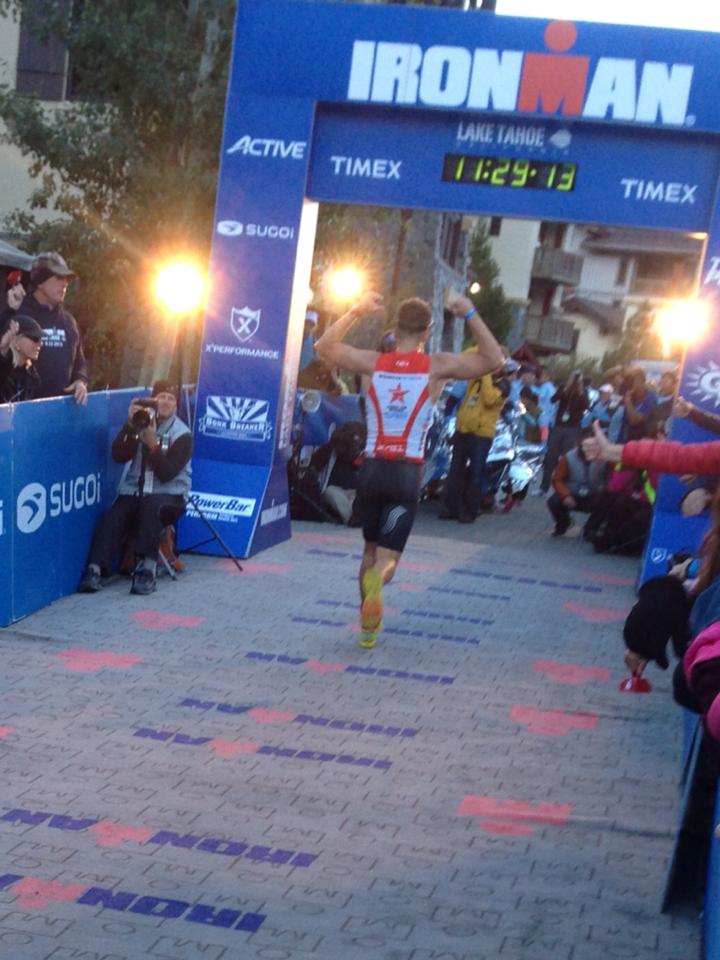 The Line
The Line
Finally I had arrived at what was supposed to be the true test of the day. The run for the man with no run. It didn’t start off well. My legs were pretty trashed from my ‘non-ideal’ bike gearing and I could feel cramps coming.
I backed way off, focused on nutrition and hydration and quite a few people passed me as a result. At this point however, lessons from last year’s successful run at Tremblant really payed dividends. There I learned that at least for me, that if I’m going to have any hope of bringing a run all the way home the first loop should feel very easy. The suck is going to come whether you like it or not, so if you’re already huffing and puffing at mile 4 you aren’t going to still be running at mile 24.
I threw pace out the window and focused almost solely on HR and RPE and soon with the usual ups and downs of the Ironman® marathon I began to reel people in. I had paced to give myself the best possible chance on from mile 18 but there certainly would be no unleashing the throttle after crossing the line.
I was well beyond my longest run of the year at that point and that last 6 miles was all about hanging on. I slowed down and I didn’t break any land speed records, but I kept moving and kept running even up the somewhat unexpected (to me) amount of hills.
In the finishing chute I didn’t even look at the clock because the course showed me everything I needed to know– I apparently was sucking a whole less than most. The finishing chute was entirely deserted and I had it all to myself to bring home a new Ironman® PW.
That’s right, a personal worst. My slowest finish of my meager 3. Even slower than my debut Wisconsin when I hardly knew what the hell I was doing. Yet, I had my highest ever AG and OA placement and simply I knew that I had done the best I could do. It wasn’t good enough for Kona, nor was it even close. But it was good enough for me, and it was more than good enough for those who care about me, and in the end that is all that matters.
Swim: 1:11:31 508 OA, 35 AG (T1: 11:14)
Bike: 6:05:01 158 OA, 12 AG (T2: 4:53 w/bathroom break)
Run: 3:53:21 128 OA, 10 AG
Thank you so much for reading, for the encouraging words and for all the wisdom over the past few years. However, while Team EN has been pretty great to me, I do have to admit that Team-Trevor might have stolen the cake on this one.
‘Team Trevor’ 2013

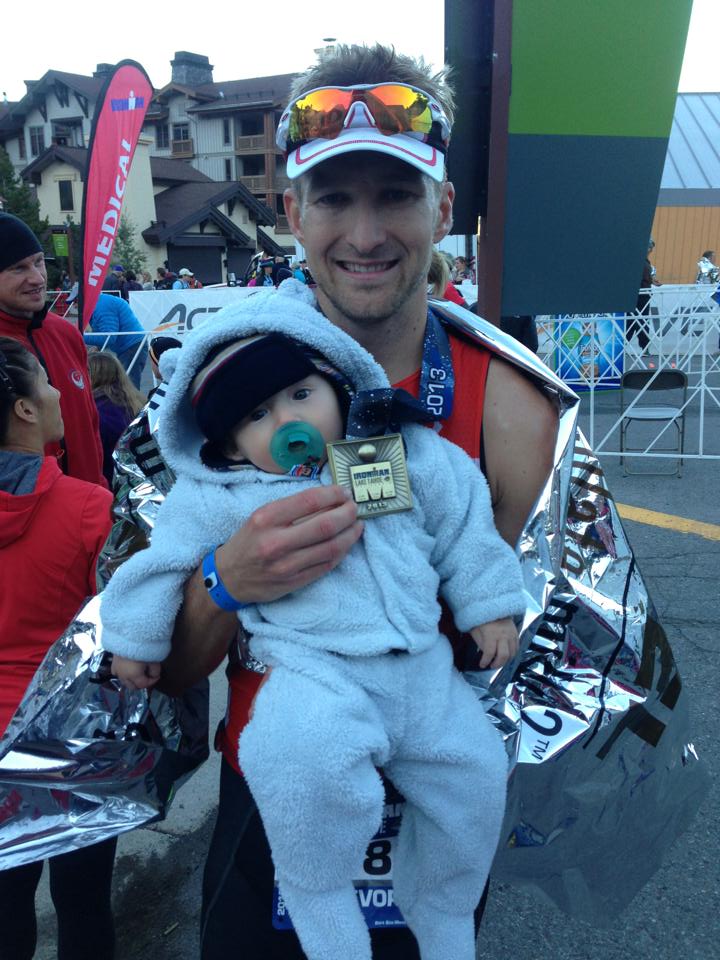
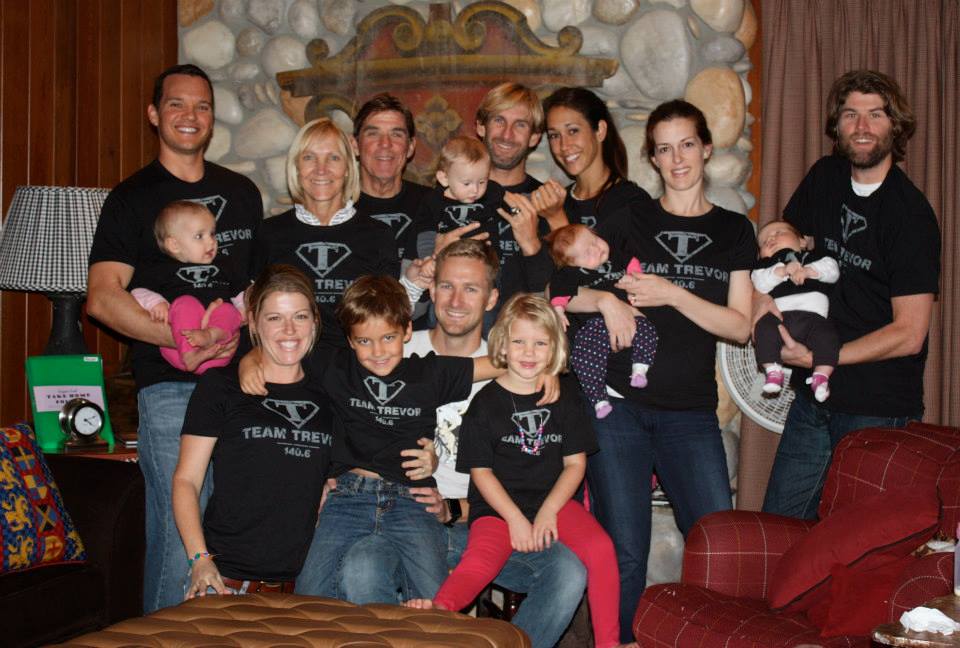
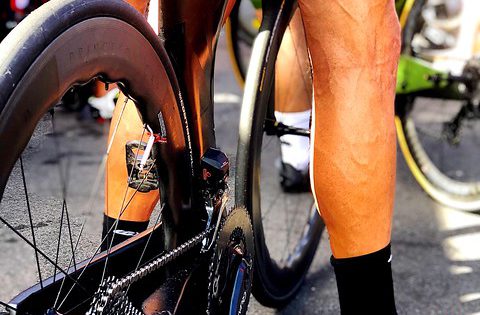
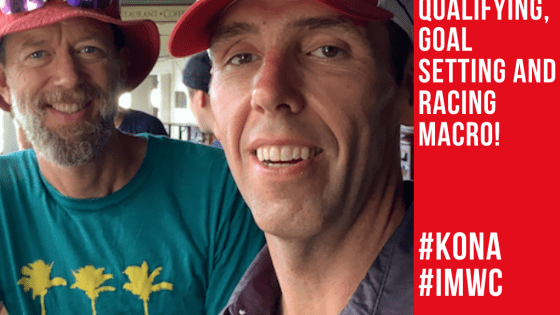
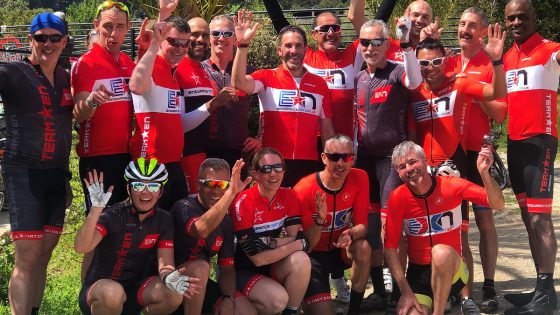
Leave a Reply